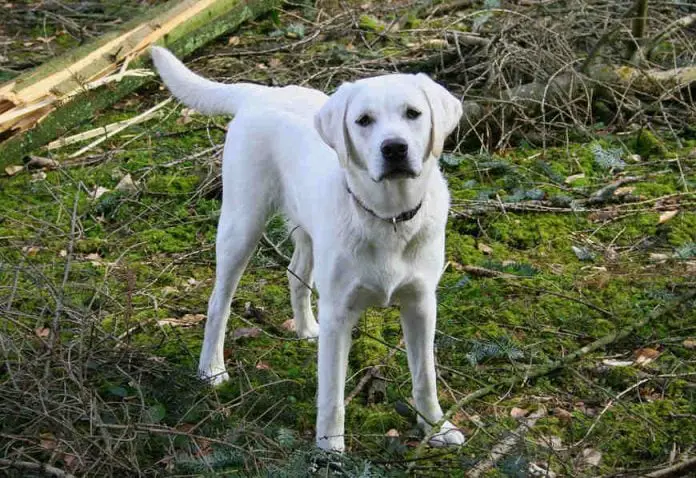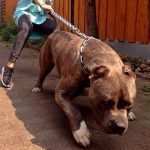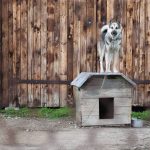Do white Labradors exist? This might come to your mind if you are interested in bringing home a Labrador as a pet. Many people seek the white color because it is pristine andlooks noble. But it is also no secret that this breed has a very limited number of coat colors. There are people wondering if a white Lab is actually an accepted color or if it’s just a result of poor breeding. If you are eager to buy one, let this post serve as your guide.
What is a White Lab?
A white Labrador can only mean two things: it is either a pale version of the yellow coat color in Labrador Retrievers or a sufferer of the rare condition called albinism. As you might know by now, a Labrador only has three accepted colors, chocolate, yellow, and black. These are the only standard colors recognized by major dog associations like the American Kennel Club.
Each color has different variations. Yellow Labs alone come in a few shades, with some of them being lighter than others. You might have heard about fawn Labs. These dogs still fall under the yellow category. Fawn labs are not as orange as the fox red color, but they are a bit darker than the yellow ones. The white labs are the lightest shades of yellow Labradors and they sometimes have a cream color than pure white.
Albinism in Labradors
Albinism can happen in any dog breed, but it is considered to be rare. Albino dogs all have one thing in common: they lack the genes needed to create tyrosinase which is required to produce melanin. As we all know, melanin is a kind of pigment that gives humans and animals their skin and hair color. Without sufficient melanin, humans and animals end up with a lighter color and are also subject to skin cancers.
Some dogs with a merle and piebald color are also mistaken for being albino dogs. However, it is rare in Labs to see the merle pattern which only appears if they have the M locus gene. For a dog to come up with a merle pattern, he only needs to carry one copy of the M allele in his gene.
Weather you have an albino dog or not, remember that it deserves the same love and care other dogs need. However, it is worth noting that they are more prone to certain health problems that may affect their overall wellbeing and lifespan. Parents of albino dogs need to provide utmost care to help their buddies lead a normal and happy life.
How to Know If a Dog Is Albino
Start by looking at the dog’s eyes and nose. See if the area around shows off a pinkish hue. You may also want to check if the shade of white is closer to cream or yellow than pink. Albino dogs tend to have a pinkish skin if you take a closer look at it. Aside from having a pinkish hue around the eyes, they also tend to have a lighter colored nose compared to normal Labs.
Some dogs are just partial albino or not fully suffering from albinism. Many of them also have blue eyes and often have a problem when it comes to vision. They can also be more sensitive to bright light, which is why it is recommended to limit their time outdoors. When you have an albino dog, you may need to limit his exposure to the sun.
Unfortunately, there is no examination that can identify if a dog is a true albino or not. You may do genetic testing, but this is just to see if the pet is carrying the M allele in its genes. If you are in doubt whether your white Lab is a true white dog or actually suffering from albinism, it is best to consult a vet regarding that. They will also conduct a physical exam to confirm this.
What Makes White Labs Special?
There are so many good things to love about the Labrador Retrievers. But did you know that there is a specific trait associated with every coat color? The yellow, black, and chocolate colored Labs may have many similar traits common to their breed but they are associated with different tasks.
White Labs, which fall under the yellow Lab shade, are best known for their skills as service dogs. They are smart dogs that are easy to train, making them ideal for the role. Besides being easy to train, they also have a calm temperament that favors breeders.
In the United States, service dogs are known for assisting people with disabilities, like those with impaired vision, hearing problems, compromised mental health, and even those suffering from diabetes. In other countries, like in the U.K., they are also known as “assistance dogs.” These dogs undergo private training.
One research revealed that the Labrador Retriever is among the four breeds that are best used as a service dog. The others are the German Shepherds, Golden Retrievers, and the Golden labs or the cross between the Golden Retriever and the Labrador.
Grooming Tips for White Labradors
Because of their light coat, dirt is more evident on white-colored Labs. Hence, coat maintenance is important for keeping the pet healthy and neat. More than that, you’ll want to invest in grooming tools because Labs shed a lot. They are heavy shedders despite the fact that they have a short coat. Here are the things that can help in grooming your new buddy:
1.Brush your Lab regularly with a slicker brush. There many types of brushes for dogs, but a slicker brush is considered to be the perfect tool for Labradors because it gets rid of mats and tangles in a gentle manner. This is because slicker brushes are typically made of fine bristles that penetrate deep into the dog’s skin so your dog stays comfortable during the brushing session. It is not as harsh as other grooming tools, like a rake. It can also remove loose undercoat, which makes coat maintenance easier and faster.
2.Use a de-shedding tool or a rake during the molting season also called the blowing of the coat. Twice a year, your white Lab will go through a molt. This refers to that time in the year when your Lab will shed twice or thrice more than the usual. You will notice clumps of hair usually during spring and fall to help your dog adjust better during the summer and winter, when weather tends to be warmer or colder than usual.
3.Pamper your dog at the dog salon. These dogs do not really need professional grooming, but they will enjoy a short pampering session once in a while. Don’t shave your Lab’s coat even when it’s very tempting to do so, especially during the molting season. Labs don’t really need trimming unless it’s for show. There are owners who give their pooches a haircut before taking them to the show ring. You can take your pooch to a groomer where he will be given a full bath.
4.Prevent coat stains by being aware of food allergies. Did you know that allergies to certain food items can leave your pooch with red stains on the paws? This happens because of the excessive itching associated with allergies. If you suspect your dog is hypersensitive to some foods, like diary and meat, consult your veterinarian for advice. Your vet may recommend a food elimination diet to confirm that it is truly a case of food allergy.
5.Avoid using clarifying shampoos for removing stains. If your pooch already has stains on the body, don’t be tempted to use clarifying shampoos because they can be quite harsh on the skin. When you are not sure where the staining comes from, consult a veterinarian.
6.Correct staining with apple cider vinegar. One of the best ways to correct stains on dogs is to use a natural product like apple cider vinegar. The acid in the vinegar helps clear tear stains. If your pooch is itching because of allergies, the vinegar can also help as a natural topical remedy. This can be prepared in a spray bottle from one part water and one part vinegar. It is also effective in treating other skin problems in dogs.
How to Minimize Pet Hair at Home
Having a white Lab at home is synonymous to dealing with white hair every single day. Just because they have short hair does not mean you will not have to worry about pet hair everywhere. The most important thing to remember, when having a white Lab, is to invest in a decent vacuum cleaner. Make it a habit to vacuum regularly so you will not see that pet hair collecting like clumps on your floors or on the furniture.
What to look for in a good vacuum? First of all, consider those with pet-friendly features like the HEPA filter to clean not just your home but also the air you are breathing effortlessly. The dander coming from your dog is microscopic but it tends to linger around for a really long time. Some vacuum cleaners are even equipped with different sets of nozzles so you can tackle different types of surfaces, from hardwood floors to upholstered couches.
Powerful vacuums are a bit expensive but they are worth every cent since they are guaranteed to last even if you need to use them daily. Some vacuum cleaners even come with an allergy-friendly feature so you will not sneeze when cleaning your floors. If you are often left with watery eyes after vacuuming, you definitely need to go for an appliance with anti-allergy features.
Tips in Decorating Your Home
Getting rid of hair at home is not your only concern when you own a Labrador Retriever. When you have pets at home, you have to make careful decisions when it comes to every aspect of your home, from the paint and the flooring down to your furniture. If you are thinking of redecorating your home, here are some helpful tips to make your living space more presentable:
Use light-colored carpetsand sofas. Nobody wants to have couches that look constantly messy because of pet hair. Your white Lab’s hair is more evident on black or dark-colored furniture. It is better to invest in cream-colored furniture because your pet’s hair will not look so obvious on them.
Avoid fabrics that easily attract pet hair. The ideal materials for curtains and other fabrics are polyester and microfiber because they repel hair. Be selective when it comes to microfiber, though, because if it is not tightly woven then it may just defeat the purpose. Velvet and chenille may seem classy for your abode, but you may want to think twice before using these materials in your home as they attract a lot of pet hair, not to mention that they are not that durable to withstand wear and tear.
Keep everything tidy with the help of a squeegee. One of the less desirable parts of having pets at home is the never-ending battle with pet hair. If you think vacuuming alone is not enough, use a squeegee to keep pet hair at bay, especially on smaller surfaces like carpets and upholstered furniture. It helps to have one at home on top of a high-quality and durable vacuum cleaner.
Conclusion
A white Lab may be mistaken for being a true albino dog, but this rarely happens. In most cases, white Labs are just lighter variations of the ones with a yellow coat color. This means they are still recognized as an official coat color and are eligible for registration on dog clubs, like the American Kennel Club.






















